|
King Louis XIV
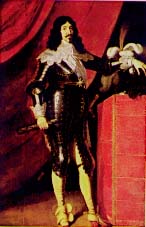 Louis XIV's parents, King Louis XIII and his wife Anne of Austria, hated each other. Their marriage remained unconsummated for at least four years; it was 23 years before their first child, Louis, was born in 1638. Apparently encouraged by this success, the royal couple produced another son, Philippe, in 1640.
Louis XIV's parents, King Louis XIII and his wife Anne of Austria, hated each other. Their marriage remained unconsummated for at least four years; it was 23 years before their first child, Louis, was born in 1638. Apparently encouraged by this success, the royal couple produced another son, Philippe, in 1640.
When young Louis was four, his father fell gravely ill with tuberculosis. Knowing that he was about to die, the king ordered that his eldest son be baptised (which normally would have taken place when the prince was seven). At the ceremony the boy was given the name Louis Dieudonne, or "Gift of God," because his birth had seemed so miraculous. Afterward he was brought to his father's deathbed. "What is your name?" Louis XIII asked.
"Louis XIV," the little boy replied.
"Not yet, not yet," said the king. But less than a month later he died, and his four-year-old son did indeed become King Louis XIV of France.
The King's Family
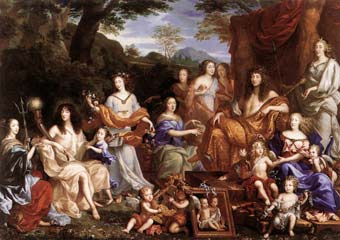 For 18 years, Anne of Austria (who despite her name had been born a Spanish princess) served as her son's regent, advised by Cardinal Mazarin. The cardinal may have been the queen's lover or even her secret husband. Whatever the truth of that, Mazarin's relationship with Louis was like that of father and son.
For 18 years, Anne of Austria (who despite her name had been born a Spanish princess) served as her son's regent, advised by Cardinal Mazarin. The cardinal may have been the queen's lover or even her secret husband. Whatever the truth of that, Mazarin's relationship with Louis was like that of father and son.
Family life was less sunny for Louis's only sibling, Philippe, who was called Monsieur at court and eventually became Duke of Orleans. Treated with suspicion by his mother and the cardinal, constantly shunted aside and poorly educated to keep him from outshining his elder brother, Philippe grew up to be a frivolous man, more interested in fashion and society than politics and government. He was also openly homosexual, which made him an object of scorn, even to his womanizing brother.
But there was more to Philippe than met the eye. He was an able military leader, a keen collector of art, and perhaps a shrewd investor (as Nancy Nichols Barker suggests in her book Brother to the Sun King). Given a chance, he might have made a fine king -- which was just why his mother went to such lengths to keep him in his place.
When King Louis was in his teens he fell in love with Marie Mancini, a niece of Cardinal Mazarin. The two secretly became engaged, but Louis's mother refused to allow the match. Marie Mancini was packed off to Italy to marry a nobleman, and Louis reluctantly agreed to a political marriage with Maria Theresa, the daughter of the king of Spain. The couple would have seven children, but only one -- a son named Louis -- survived to adulthood.
A Glorious Reign
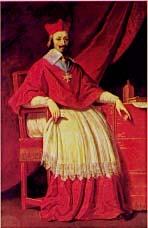 Cardinal Mazarin died in 1661, when Louis XIV was 22 years old. From that time on, Louis XIV was the sole ruler of France. He reigned for 72 years, longer than any other ruler in European history. Under his leadership France became a world power and a leader in the arts. He was an absolute monarch, as expressed in the famous quote attributed to him, "L'etat c'est moi" (I am the state). Identifying himself with Apollo, the Greek god of the sun, Louis XIV came to be called "the Sun King."
Cardinal Mazarin died in 1661, when Louis XIV was 22 years old. From that time on, Louis XIV was the sole ruler of France. He reigned for 72 years, longer than any other ruler in European history. Under his leadership France became a world power and a leader in the arts. He was an absolute monarch, as expressed in the famous quote attributed to him, "L'etat c'est moi" (I am the state). Identifying himself with Apollo, the Greek god of the sun, Louis XIV came to be called "the Sun King."
Today Louis XIV is perhaps best remembered as the king who built Versailles. When he became king he inherited several palaces, including the Fontainebleau and the Louvre. But after visiting the beautiful home of his minister, Nicholas Fouquet, he decided to build something even more magnificent.
He moved his court to the little village of Versailles, where he owned a quaint hunting lodge. First he improved the grounds with lavish gardens, sculptures, terraces, a lake, a zoo, and 1,500 fountains. In 1668 work started on the main chateau. The old buildings were surrounded by grand new ones designed by Louis Le Vaux and Francois Dorbay. Francois Mansard created the opulent Hall of Mirrors.
Smaller palaces were added nearby, including Marly-le-Roi, the Grand Trianon, and the Petit Trianon. The entire project cost 66 million livres.
After Louis's death, Versailles was used as a royal residence by his great-grandson Louis XV. The Sun King's great-great-great-grandson Louis XVI also lived there, along with his wife Marie Antoinette. Badly damaged in the French Revolution, the palace was restored by subsequent rulers and eventually became a museum, which it remains to this day.
The King's Mistresses
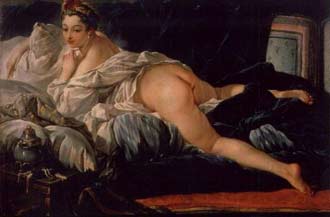 Although Louis was unfailingly kind to Queen Maria Theresa, he was far from a faithful husband. For a while he even pursued Madame, the first wife of his brother, Philippe. Louis's mother ordered him to stop spending so much time with Madame, so the king and Madame concocted a scheme. Louis would pretend to be in love with one of Madame's maids-of-honor, Louise de la Valliere; that way he could visit Madame's apartments without anyone suspecting that it was Madame he wanted to see. But soon Louis really did fall in love with La Valliere, and Madame was forgotten.
Although Louis was unfailingly kind to Queen Maria Theresa, he was far from a faithful husband. For a while he even pursued Madame, the first wife of his brother, Philippe. Louis's mother ordered him to stop spending so much time with Madame, so the king and Madame concocted a scheme. Louis would pretend to be in love with one of Madame's maids-of-honor, Louise de la Valliere; that way he could visit Madame's apartments without anyone suspecting that it was Madame he wanted to see. But soon Louis really did fall in love with La Valliere, and Madame was forgotten.
La Valliere lived openly as the king's mistress for six years. In 1667 she was made a duchess and her two children by the king were legitimized. (One of them, the Comte de Vermandois, was later rumored to be the Man in the Iron Mask.) But that same year the fickle king fell in love with La Valliere's friend Athenais, the future Marquise de Montespan. She replaced La Valliere as the king's mistress, and in 1674 La Valliere retired to a convent.
Madame de Montespan had several children with the king. In 1669 she hired a governess, Madame Scarron. A bad move because, true to form, Louis fell in love with Madame Scarron! Now it was Montespan's turn to be discarded in favor of another woman. She allegedly turned to black magic in an attempt to win the king back, but all her efforts failed and in time she, too, retired to a convent.
Madame Scarron took Montespan's place as the king's mistress and was given the title Madame de Maintenon. Unlike the king's previous mistresses, Madame de Maintenon was a matronly woman; also unlike the others, she managed to hold on to the king's affections. She and Queen Maria Theresa became good friends.
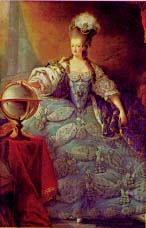 In 1683 the queen died in Madame de Maintenon's arms. Six months later, Louis secretly married Madame de Maintenon. It was a morgantic marriage, meaning his new wife could never become queen. Few of the king's courtiers were aware of the marriage; most continued to view Madame de Maintenon as the king's mistress.
It was partially due to Madame de Maintenon's influence that Louis revoked the Edict of Nantes in 1685. The edict had given French Protestants the right to worship as they chose; after the revocation thousands of Huguenots (Protestants) fled the country, which seriously weakened France's economy. Europe's protestant rulers turned against Louis and war ensued.
In 1683 the queen died in Madame de Maintenon's arms. Six months later, Louis secretly married Madame de Maintenon. It was a morgantic marriage, meaning his new wife could never become queen. Few of the king's courtiers were aware of the marriage; most continued to view Madame de Maintenon as the king's mistress.
It was partially due to Madame de Maintenon's influence that Louis revoked the Edict of Nantes in 1685. The edict had given French Protestants the right to worship as they chose; after the revocation thousands of Huguenots (Protestants) fled the country, which seriously weakened France's economy. Europe's protestant rulers turned against Louis and war ensued.
Life at Versailles
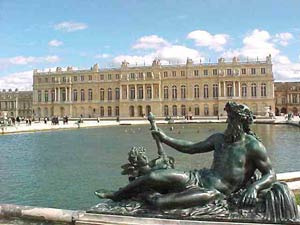 Ten thousand people lived at the chateau of Versailles. The court revolved around Louis like planets around the sun.
Ten thousand people lived at the chateau of Versailles. The court revolved around Louis like planets around the sun.
Every aspect of the king's life was conducted with pomp and ceremony. He was awakened each morning at eight by his First Valet de Chambre, who slept on a folding bed in the king's room. Then the First Physician, the First Surgeon, and Louis's former nanny entered the room to check the king's health. Fifteen minutes later the Grand Chamberlain and other favored courtiers were admitted to watch the king dress. The valet always handed the royal shirt to the most important courtier in the room, who had the honor of handing it to Louis.
Next it was time for the king to kneel and pray, again with the crowd of courtiers watching attentively. Soon Louis made his way to mass with the entire court trailing behind him.
Sometimes Louis even dined in public; anybody who was properly dressed could stand in line to file past the king's table. At "private" dinners he was observed by a crowd of servants and courtiers. Only Louis's brother was allowed to eat with the king on these occasions; everyone else had to stand and watch. No women were present; the king's wife had her own (equally ceremonial) dinners separately. The king's supper was somewhat more informal. It took place in the presence of the entire court, and the king's family members were allowed to sit and eat with him.
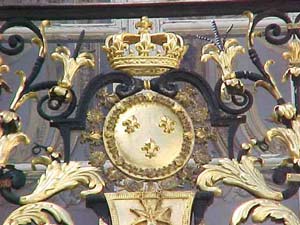 Louis's life was not entirely ruled by ritual. He worked six to nine hours a day, and is said to have relaxed a bit in the company of his ministers, although his insistence on etiquette never wavered. He also found time for hunting, strolling through his gardens, and spending time with his family. At night he enjoyed concerts, comedies, operas, parties, and gambling.
Louis's life was not entirely ruled by ritual. He worked six to nine hours a day, and is said to have relaxed a bit in the company of his ministers, although his insistence on etiquette never wavered. He also found time for hunting, strolling through his gardens, and spending time with his family. At night he enjoyed concerts, comedies, operas, parties, and gambling.
Death of the Sun King
The final years of Louis XIV's reign were marred by his persecution of Protestants and bitter losses in war. His personal life was also marked by tragedy. Between 1701 and 1712 his brother, son, grandson, and beloved granddaughter-in-law all died. Louis himself died an agonizing death from gangrene on September 1, 1715. He was succeeded by his great-grandson, King Louis XV.
Saint-Simon's Portrait of Louis XIV
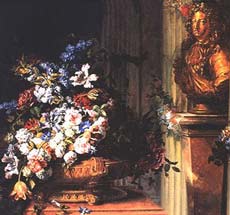 Louis XIV's vanity was without limit or restraint; it colored everything and convinced him that no one even approached him in military talents, in plans and enterprises, in government. Hence those pictures and inscriptions in the gallery at Versailles which disgust every foreigner; those opera prologues that he himself tried to sing; that flood of prose and verse in his praise for which his appetite was insatiable; those dedications of statues copied from pagan sculpture, and the insipid and sickening compliments that were continually offered to him in person and which he swallowed with unfailing relish; hence his distaste for all merit, intelligence, education, and, most of all, for all independence of charactcr and sentiment in others; his mistakes of judgment in matters of importance; his familiarity and favor reserved entirely for those to whom he felt himself superior in acquirements and ability; and, above everything else, a jealousy of his own authority which determined and took precedence of every other sort of justice, reason, and consideration whatever. . .
Louis XIV's vanity was without limit or restraint; it colored everything and convinced him that no one even approached him in military talents, in plans and enterprises, in government. Hence those pictures and inscriptions in the gallery at Versailles which disgust every foreigner; those opera prologues that he himself tried to sing; that flood of prose and verse in his praise for which his appetite was insatiable; those dedications of statues copied from pagan sculpture, and the insipid and sickening compliments that were continually offered to him in person and which he swallowed with unfailing relish; hence his distaste for all merit, intelligence, education, and, most of all, for all independence of charactcr and sentiment in others; his mistakes of judgment in matters of importance; his familiarity and favor reserved entirely for those to whom he felt himself superior in acquirements and ability; and, above everything else, a jealousy of his own authority which determined and took precedence of every other sort of justice, reason, and consideration whatever. . .
The king's great qualities shone more brilliantly by reason of an exterior so unique and incomparable as to lend infinite distinction to his slightest actions; the very figure of a hero, so impregnated with a natural but most imposing majesty that it appeared even in his most insignificant gestures and movements, without arrogance but with simple gravity; proportions such as a sculptor would choose to model; a perfect countenance and the grandest air and mien ever vouchsafed to man; all these advantages enhanced by a natural grace which enveloped all his actions with a singular charm which has never perhaps been equaled. He was as dignified and majestic in his dressing gown as when dressed in robes of state, or on horseback at the head of his troops.
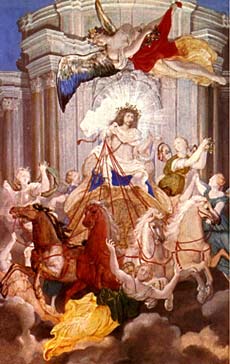 He excelled in all sorts of exercise and liked to have every facility for it. No fatigue nor stress of weather made any impression on that heroic figure and bearing; drenched with rain or snow, pierced with cold, bathed in sweat or covered with dust, he was always the same. I have often observed with admiration that except in the most extreme and exceptional weather nothing prevented his spending considerable time out of doors every day.
He excelled in all sorts of exercise and liked to have every facility for it. No fatigue nor stress of weather made any impression on that heroic figure and bearing; drenched with rain or snow, pierced with cold, bathed in sweat or covered with dust, he was always the same. I have often observed with admiration that except in the most extreme and exceptional weather nothing prevented his spending considerable time out of doors every day.
A voice whose tones corresponded with the rest of his person; the ability to speak well and to listen with quick comprehension; much reserve of manner adjusted with exactness to the quality of different persons; a courtesy always grave, always dignified, always distinguished, and suited to the age, rank, and sex of each individual, and, for the ladies, always an air of natural gallantry. So much for his exterior, which has never been equaled nor even approached.
In whatever did not concern what he believed to be his rightful authority and prerogative, he showed a natural kindness of heart and a sense of justice which made one regret the education, the flatteries, the artifice which resulted in preventing him from being his real self except on the rare occasions when he gave way to some natural impulse and showed that, - prerogative aside, which choked and stifled everything, - he loved truth, justice, order, reason, - that he loved even to let himself be vanquished.
Nothing could be regulated with greater exactitude than were his days and hours. In spite of all his variety of places affairs, and amusements, with an almanac and a watch one might tell, three hundred leagues away, exactly what he was doing. . . . Except at Marly, any man could have an opportunity to speak to him five or six times during the day; he listened, and almost always replied, "I will see," in order not to accord or decide anything lightly. Never a reply or a speech that would give pain; patient to the last degree in business and in matters of personal service; completely master of his face, manner, and bearing; never giving way to impatience or anger. If he administered reproof, it was rarely, in few words, and never hastily. He did not lose control of himself ten times in his whole life, and then only with inferior persons, and not more than four or five times seriously.
The Man in the Iron Mask
In 1698 a mysterious man was imprisoned in the Bastille. Almost no one seemed to know who he was, although residents of the French prison were usually important people who had fallen out of favor with King Louis XIV. This man had been a captive of the government since at least 1687, and for all that time his face had been hidden by a mask.
The masked man died in 1703, but rumors about his strange existence continued to circulate. In 1711 the king's sister-in-law, the Princess Palatine, mentioned the story in a letter to her aunt. The prisoner was treated very well, she said, but two musketeers stood by him at all times, ready to kill him if he removed his mask. He ate in the mask, slept in the mask, and eventually died in the mask. Even at the royal court his identity remained a mystery.
The philosopher and writer Voltaire was confined to the Bastille in 1717. He spent almost a year there, and later told a friend that he had spoken to people who had served the Man in the Iron Mask. In his book The Age of Louis XIV, published in 1751, Voltaire said that the prisoner was forced to wear an iron mask as early as 1661, when he was held captive on the island of Sainte-Marguerite. The prisoner was young (in 1661), tall and very handsome. He dressed in the finest lace and linen, and enjoyed playing the guitar.
In his later writings Voltaire dropped broad hints about the prisoner's possible identity. According to Voltaire, the man was about 60 when he died, and bore a striking resemblance to someone very famous. Of course, the most famous face in France at that time belonged to King Louis XIV, who was also in his 60s. Another writer, Joseph de Lagrange-Chancel, lived at Versailles during Louis XIV's reign and was imprisoned on Sainte-Marguerite in the 1720s. He asserted that Benigne d'Auvergne de Saint-Mars, the governor of Sainte-Marguerite, treated the masked man deferentially and called him "my prince."
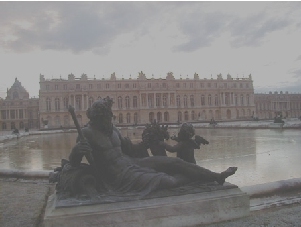 In 1768 a descendant of Saint-Mars wrote that the prisoner was called "Tower" by his captors. He didn't have to wear the mask all the time, only in public, and the guards sometimes saw him without it. When prison officials were in Tower's presence they politely removed their hats and remained standing until the prisoner gave them permission to sit.
In 1768 a descendant of Saint-Mars wrote that the prisoner was called "Tower" by his captors. He didn't have to wear the mask all the time, only in public, and the guards sometimes saw him without it. When prison officials were in Tower's presence they politely removed their hats and remained standing until the prisoner gave them permission to sit.
Stories about the masked prisoner are often conflicting. Some writers state that he wore a mask of black velvet, not iron. Etienne Du Junca, who was second in command of the Bastille, never saw the prisoner without his black velvet mask. Du Junca wrote in his journal that the prisoner was buried under the name M. de Marchiel. A later writer located a death certificate giving the prisoner's name as Marchioly and his age as approximately 45.
In 1789 journalist Frederic-Melchior Grimm claimed that a royal valet had revealed to him that Louis XIV had an identical twin. The twins' father, Louis XIII, feared the brothers would grow up to fight over the throne, so he sent the second-born baby away to be raised in secret. The boy was taken into a nobleman's household and treated with great respect, but he was never told who he really was. As a young man he saw a portrait of his brother and guessed the truth. He was immediately arrested, and spent the rest of his life as the Man in the Iron Mask.
Many people believed this (probably fictional) account, which was elaborated and embroidered by other writers as the years passed. It has been said that when the Bastille was stormed by a revolutionary mob, the prince's skeleton was discovered, still wearing its iron mask, but there is no record that this actually happened. Napoleon supposedly believed that he was descended from the unfortunate prince, who, according to legend, had married the daughter of the governor of Sainte-Marguerite.
The Sun King
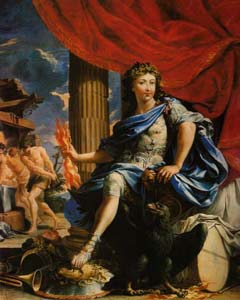 Many people found it difficult to believe that Louis XIV was really the son of Louis XIII and his wife, Anne of Austria for one simple reason: Louis XIII and his wife hated each other. Their marriage remained unconsummated for at least four years; it was twenty-three years before their first child, Louis, was born.
Many people found it difficult to believe that Louis XIV was really the son of Louis XIII and his wife, Anne of Austria for one simple reason: Louis XIII and his wife hated each other. Their marriage remained unconsummated for at least four years; it was twenty-three years before their first child, Louis, was born.
Rumors flew that Louis, the "God given" miracle child, was actually the son of Anne's favorite, the Duc de Beaufort. Legend has it that Beaufort was imprisoned in the iron mask to prevent anyone from learning that he was the king's real father.
 Beaufort was not the only man rumored to have conducted an affair with Anne. Years earlier she had enjoyed a brief flirtation with the English Duke of Buckingham. It has been suggested that the Iron Mask was their secret son. Another story links Anne to a foreigner known only as C.D.R. Like Beaufort, C.D.R. is said to have been Louis's real father, and like Beaufort he supposedly ended up in the iron mask. In yet another version of the story, the Iron Mask is Marc de Jarrigue de La Morelhie, the son-in-law of the queen's physician. Morelhie stumbles across proof that Louis XIV is not Louis XIII's son, and is imprisoned in the iron mask to prevent him from sharing his dangerous knowledge with others.
Beaufort was not the only man rumored to have conducted an affair with Anne. Years earlier she had enjoyed a brief flirtation with the English Duke of Buckingham. It has been suggested that the Iron Mask was their secret son. Another story links Anne to a foreigner known only as C.D.R. Like Beaufort, C.D.R. is said to have been Louis's real father, and like Beaufort he supposedly ended up in the iron mask. In yet another version of the story, the Iron Mask is Marc de Jarrigue de La Morelhie, the son-in-law of the queen's physician. Morelhie stumbles across proof that Louis XIV is not Louis XIII's son, and is imprisoned in the iron mask to prevent him from sharing his dangerous knowledge with others.
It has even been claimed that the Iron Mask was the daughter of Anne of Austria and Louis XIII. Fearing their first child would be their last, and needing a boy child to inherit the throne, the royal couple supposedly swapped their baby girl for someone else's son. The imposter was raised as Louis XIV, and the real princess was banished to imprisonment in the iron mask. (This story was politically motivated. A year after Louis XIV's birth, Anne of Austria gave birth to her second son, Philippe. The enemies of Louis XIV's descendants wanted to believe that Philippe, not Louis, was Louis XIII's eldest son and the rightful heir to the throne.)
Louis XIV's father died when he was four. For 18 years Anne of Austria served as her son's regent, advised by Cardinal Mazarin. It was whispered that she had married Mazarin. Eventually the story arose that Anne and Mazarin had a secret son who became -- of course! -- the Man in the Iron Mask.
Louis XIV is 23 years old in the Alexandre Dumas story The Man in the Iron Mask. The story's characters include Louis's mother, Anne of Austria, and his mistress, Louise de Valliere. Louis's ministers Colbert and Fouquet also play important roles. The king did have a group of aristocratic guards called the Musketeers, but the musketeers in Dumas's story are fictional.
One of the reasons Louis XIV is so well remembered today is that he built the spectacular French palace of Versailles. The Leonardo DiCaprio movie The Man in the Iron Mask (based on Dumas's novel) takes place in the 1660s, when Louis XIV was just beginning to improve his property at Versailles. Parts of the movie were shot at Nicholas Fouquet's lovely palace, Vaux-le-Vicomte, which inspired Louis XIV to build Versailles. The king's envy of Vaux led him to have Fouquet arrested -- and some people believe that it was Fouquet who became the Man in the Iron Mask.
|




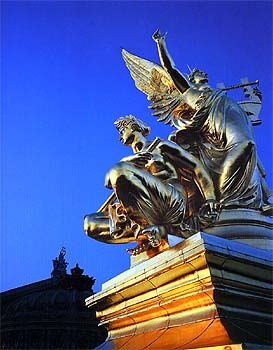




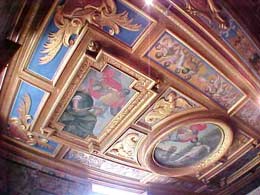






 View fascinating movies about Louis' XIV France
View fascinating movies about Louis' XIV France 










